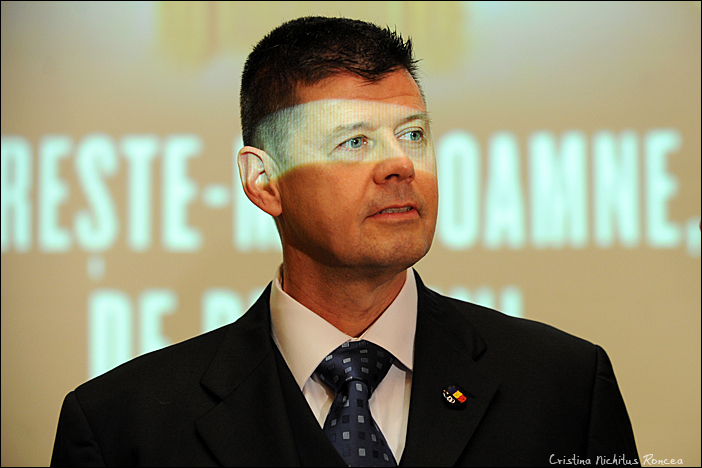
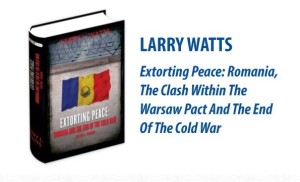 EXTORTING PEACE: ROMANIA AND THE END
EXTORTING PEACE: ROMANIA AND THE END
OF THE COLD WAR, 1978-1989, VOL. 2
Larry L. Watts.
Bucharest: Editura RAO, 2013.
765 pages.
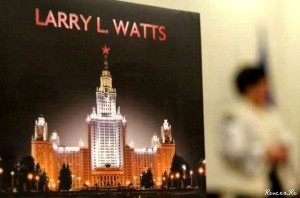 WITH FRIENDS LIKE THESE: THE SOVIET BLOC’S
WITH FRIENDS LIKE THESE: THE SOVIET BLOC’S
CLANDESTINE WAR AGAINST ROMANIA, VOL. 1
Larry L. Watts
Bucharest: Military Publishing House, 2010.
733 pages
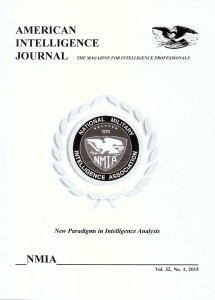 Reviewed by LTC (USAR, Ret) Christopher E. Bailey, a faculty member at the National Intelligence University specializing in national security law, processes, intelligence ethics and strategy. He is a 2008 graduate of NIU’s Denial & Deception Advanced Studies Program and the U.S. Army War College. He is licensed to practice law in California and the District of Columbia, and is a member of the National Security Law section, American Bar Association.
Reviewed by LTC (USAR, Ret) Christopher E. Bailey, a faculty member at the National Intelligence University specializing in national security law, processes, intelligence ethics and strategy. He is a 2008 graduate of NIU’s Denial & Deception Advanced Studies Program and the U.S. Army War College. He is licensed to practice law in California and the District of Columbia, and is a member of the National Security Law section, American Bar Association.
Mr. Larry Watts has authored the second in a series of three “must have” volumes for national security professionals, especially for practitioners with an interest in Eastern Europe since World War II. His initial volume, With Friends Like These: The Soviet Bloc’s Clandestine War Against Romania (2010), covering the period 1878-1978, examined Romania’s historic relations with its neighbors; its strategic position as a member of the Warsaw Pact, to include its relations with Moscow and its other erstwhile allies, the motivations behind its independent foreign policy position in defiance of Moscow during the Cold War; and the responses by Moscow and its partners in their relations with Bucharest. His recently published second volume, Extorting Peace: Romania and the End of the Cold War, 1978-1989, extends the study of Moscow’s clandestine war against Romania, while the third and yet to be published volume will cover Romania’s December 1989 revolution and its entry into Europe after 1989. The first two volumes, both extremely well researched using former Warsaw Pact and U.S. government archives, offer meticulous analysis regarding Romania’s strategic situation, how the United States saw (or often misapprehended) Romania’s position in the former Warsaw Pact, and how the Soviet Union conducted denial and deception activities against the West about what was really going on in Bucharest. Indeed, the first two volumes make liberal use of many recently declassified documents. We will not likely see the third volume until 2016.
Mr. Watts is uniquely qualified to discuss Romanian security issues both during and after the Cold War. Watts is an associate professor at the National School for Political Studies and Public Administration in Bucharest, Romania. During 2011-2013 he was a visiting professor for Security Studies and Intelligence Analysis in a master’s program run jointly by the University of Bucharest and the Romanian Intelligence Service (SRI). Most notably, he served an advisor to General Ioan Talpeş, a former director of the Romanian foreign intelligence services and national security advisor to President Ion Iliescu. Talpeş penned the foreword to the first volume. Watts served as a security sector reform advisor to Romania’s Defense Oversight Committee, Presidential Counselor for National Security, Defense Ministry; to the Foreign Intelligence Service (SIE), and with the Police General Inspectorate during the period 1991-2009. This work earned him awards for promoting military reform and North Atlantic Treaty Organization (NATO) integration, implementing democratic oversight, promoting ethnic reconciliation, and fostering Romanian-American relations. He served concurrently as a senior consultant and Bucharest office director to the Princeton-based Project on Ethnic Relations during 1991-1997, engaging in mediation efforts throughout the former Warsaw Pact. His earlier publications include a 1993 biography of Romania’s controversial World War II leader Marshal Ion Antonescu and 1998 work entitled Incompatible Allies: Neorealism and Small State Alliance Behavior in Wartime, which examines German relations with its Romanian, Hungarian and Finnish allies during World War II.[1] In 2003 he made a model contribution to Romanian security through NATO: Partners and Players in Central and Eastern European Security, a multi-authored work edited by Charles Krupnick of the U.S. Army War College.[2]
In both With Friends Like These and Extorting Peace, Mr. Watts challenges the prevailing conventional views on Romanian foreign policy and security during the Cold War. He argues that Bucharest pursued an independent foreign policy, often challenging Moscow’s claim to leadership in the Warsaw Pact. For example, he examines the 1980 Warsaw Pact statute, designed to provide for Soviet wartime command and control over its East European allies; he shows how Bucharest opposed Soviet leadership and sought greater national autonomy over its armed forces. Bucharest even encouraged the other Bloc members to act more independently as well, abeit with marginal success (except for Czechoslovakia during the mid-1960s). Watts further argues that, in response to Romanian actions, the Soviet Union conducted a maskirovka (i.e., imitation, camouflage or disinformation) campaign in an effort to convince Western observers that Moscow had, in fact, orchestrated the entire range of Romanian actions. He takes the readers on a Romanian journey through the Cold War, offering important information for intelligence practitioners about the impact of mindsets upon prevailing views, how Western intelligence analysts grappled with difficult problems in interpreting the evidence, and how the Soviet Union worked through its allies to mislead the West.
The first two volumes provide detailed – if not brilliant – analysis for intelligence practitioners with an interest in denial and deception issues, to include how adversary efforts can impact both intelligence collection and analysis. According to Mark Lowenthal, former Vice Chairman of the National Intelligence Council, a targeted nation (here, the Soviet Union) can use knowledge about foreign intelligence capabilities to avoid collection (denial) or it can use the same knowledge to transmit false information to a collector (deception).[3] In fact, deception can occur by either increasing or decreasing ambiguity for the adversary. On one hand, the “ambiguity increasing” variant is designed to create general confusion and to distract an adversary through blanket noise that makes it more difficult for collectors and analysts to discern the true story. On the other hand, the “ambiguity decreasing” variant is designed to mislead an enemy into believing a specific story. One good example of this would be the Allied effort in World War II to convince German leader Adolf Hitler that the allies would invade France at Pas de Calais instead of Normandy.
Here, with regard to Romania during the late Cold War, the Soviet Union likely employed both deception variants, taking advantage of the overall strategic situation in Southeastern Europe. Indeed, Moscow was motivated to act in the face of Romanian defiance. First, in 1947-48, the rather overt Soviet response to Yugoslavia’s split from the communist bloc quickly gained Belgrade massive financial and military assistance from the West.. This meant that an assertion of independence on the part of Romanian leader Nicolae Ceaușescu would be plausible to Western observers, and equally troubling to Soviet leaders. Second, the Soviet Union had been confronted with earlier popular uprisings in East Germany (1953), Hungary (1956) and Poland (1956). Thus, any acknowledgement of Romanian independence could only have rekindled earlier feelings against Soviet rule. Third, the Soviet Union had withdrawn its ground forces from Romania in 1958. From this move, combined with Western focus on the remaining large Soviet forces deployed in East Germany, Hungary, and Poland, Western observers could infer that Romanian foreign policy was under Moscow’s control (a mindset commonly held by many during the Cold War). By all appearances, for many western observers who could not possibly have known about many mid-level intra-Warsaw Pact machinations, Romania remained a committed member of the Warsaw Pact. In fact, Moscow was able to use its loyal ally in Budapest to fan hard-to-verify concerns about the human rights abuses against ethnic Hungarians living in Romania. Hence, Soviet leaders had important reasons, both in terms of Warsaw Pact and Western audiences, for obscuring the motives behind Romanian foreign policy moves. Romania presented the Soviet Union with a complex foreign policy/security problem and Moscow’s deception story was likely worked out over time with adaptation as the circumstances required.
For the purposes of intelligence collection and analysis, an adversary’s use of denial and deception practices can greatly complicate matters – especially if that adversary is an experienced practitioner. Here, the Soviet Union, with longstanding experience in deception dating back to the Tsars, held many advantages, while Western nations, with increasing reliance on technical collection systems during the late Cold War, were at a disadvantage. From the Soviet perspective, Romania was still an ally, albeit not necessarily a reliable one, and much of the “evidence” about Romanian views could be kept from public view or explained away. For example, without a well-placed human source the Western intelligence agencies could not know what was actually said during high level Warsaw Pact or bilateral Soviet-Hungarian meetings, much less be able to investigate claims about alleged abuses against ethnic Hungarians. Indeed, given the U.S. interest in human rights issues beginning in the late 1970’s, the Soviet Union and its allies could paint Bucharest in an unfavorable light. From the U.S. perspective, the Soviet Union was the main adversary in Central Europe; the United States and its NATO allies were focused on the threat of a Soviet invasion through the Fulda Gap, plus the threat posed by Soviet mobile SS-20 ballistic missiles that could be aimed at Western Europe. This was also a threat well-suited to the technical collection capabilities of Western intelligence agencies. The United States and its allies could probably count tanks, armored vehicles and ballistic missiles using imagery satellites, and also likely intercept communications to/from such units. In short, without a Soviet threat aimed at Central Europe from Romania, there simply was not the same level of interest in that country as compared to East Germany or Poland.
Intelligence officers face complex analytical problems when confronted with adversarial denial and deception activities. Scott Hatch, writing for the Central Intelligence Agency’s journal, offers a useful taxonomy of intelligence failure.[4] Hatch posits that intelligence officers face cognitive, organizational and policy environmental challenges; Watts illustrates each of these types of challenge in his analysis of Romanian security policy vis-à-vis the Soviet Union during the late Cold War. The Western cognitive challenge included problems with analyst mindsets and biases, the complexity of change processes in Eastern Europe during the Soviet period, the lack of Western human sources with placement and access who could collect against discrete targets, and problems differentiating between signals and noise. Western organizational challenges included problems with group mindsets about the nature of the Soviet threat, the emphasis on technical collection systems focused on the Soviet Union, and the unwillingness to collect in high-risk situations. Western policy environmental challenges included consumer mindsets and needs (e.g., human rights concerns and the need to address priority issues involving the Soviet Union at the expense of long-term systemic issues with its allies). Here, Watts argues that U.S. Presidents Lyndon Johnson, Richard Nixon, Gerald Ford, and Jimmy Carter often preferred to dismiss intelligence assessments to engage in their own discussions with senior Romanian officials. Nonetheless, while intelligence officers are typically trained to use rigorous analytical methods and guard against deception, it can be difficult to prevent intelligence failure in the face of such broad challenges.
As intelligence officers pull together a wide range of sources – some ambiguous, some conflicting, and some incomplete – it can be difficult to assess the true state of affairs from several plausible explanations, much less see that the real story is the one not on the table (e.g. Sherlock Holmes’ point about spotting the curious dog that isn’t barking). How does the intelligence officer identify that null hypothesis and then ascertain the evidence that must be collected to confirm/deny its existence? Intelligence officers must question the reliability and weight of the evidence, to include an examination of its diagnostic value (the extent to which evidence supports/negates one hypothesis to the exclusion of alternatives); assess the adversary’s deception motives, opportunities and means; evaluate one’s own vulnerabilities; and consider any past opposition (here, Soviet) practices. In short, did Western intelligence officers miss the true state of affairs in Bucharest during the late Cold War? If so, what brought about that intelligence failure?
The author provides the reader with a tour de force regarding Romania’s struggle for national autonomy against both the Soviet Union and its irredentist neighbor Hungary. This is a well-researched, well-written book that deserves the attention of serious scholars. The book certainly offers a much-nuanced view of Romanian dictator Nicolae Ceaușescu, arguing that, following his predecessor, he established Romania as a more or less responsible international actor, even while leading the country down the road to economic ruin in the 1980’s. Nonetheless, many will still argue whether Bucharest truly sought to make the Warsaw Pact more democratic and consultative in its processes, and over the extent to which the Soviet Union conducted a maskirovka campaign against the West. I believe that Watts has provided well-supported and persuasive analysis, amply arguing his case regarding Bucharest’s campaign for democratizing the alliance as a means of encumbering Soviet militarism and increasing its own autonomy.
Editor’s Note: A shorter, more critical review of Mr. Watts’ first book discussed above, by Dr. Joseph L. Gordon of NIU, appeared in AIJ, Vol. 29, No. 2, 2011. Mr. Bailey feels that the record needs to be set straight. This book review would probably have fit better in the next issue of AIJ, which will focus on the theme “Denial and Deception.” However, I did not want to hold it up any longer and Mr. Bailey will review another book for that issue. Readers should consider the review above a foretaste of more D&D delights to come.
The opinions expressed in this review are the author’s personal ones and do not imply endorsement by the National Intelligence University or the Defense Intelligence Agency.
Notes
[1] Larry L. Watts, Romanian Cassandra: Ion Antonescu and the Struggle for Reform, 1916-1941 (East European Monographs, 1993); Larry L. Watts, Incompatible Allies: Neorealism and Small State Behavior in Wartime (Umeå, Sweden, University of Umeå, 1998).
[2] Charles Krupnick et al., NATO: Partners and Players in Central and Eastern European Security (Lanham, MD: Rowman & Littlefield, 2003).
[3] Mark Lowenthal, Intelligence: From Secrets to Policy, 5th ed. (Washington, DC: Sage, 2012), 82.
[4] Scott Hatch, “Managing the ‘Reliability Cycle’: An Alternative Approach to Thinking About Intelligence Failure,” Studies in Intelligence 57, no. 2 (June 2013): 29-37.
Source: NMIA & LarryLWatts via Ziaristi Online
Photo: Cristina Nichitus Roncea
See also:
In my judgment as a teacher in this field, the three volumes will constitute a trilogy that should be required reading not only for historians of modern Romania but for any historian, political scientist, or intelligence analyst seeking to understand the internal Cold War dynamics of the Warsaw Pact and COMECON.
Revista CIA “Studies in Intelligence” despre lucrările lui Larry Watts “Fereşte-mă, Doamne, de prieteni” şi “Cei dintâi vor fi cei din urmă”: un studiu meticulos şi o istorie corectă, precisă, echilibrată și convingătoareDr. Christopher D. Jones: “Las pe seama cititorilor comunității de informații să aprecieze valoarea euristică a operei profesioniste a lui Watts și să se gândească de ce comunitățile politice și de informații ar fi putut face erorile pe care le observă Watts. În ceea ce mă privește, eu accept în întregime concluziile lui Watts.”


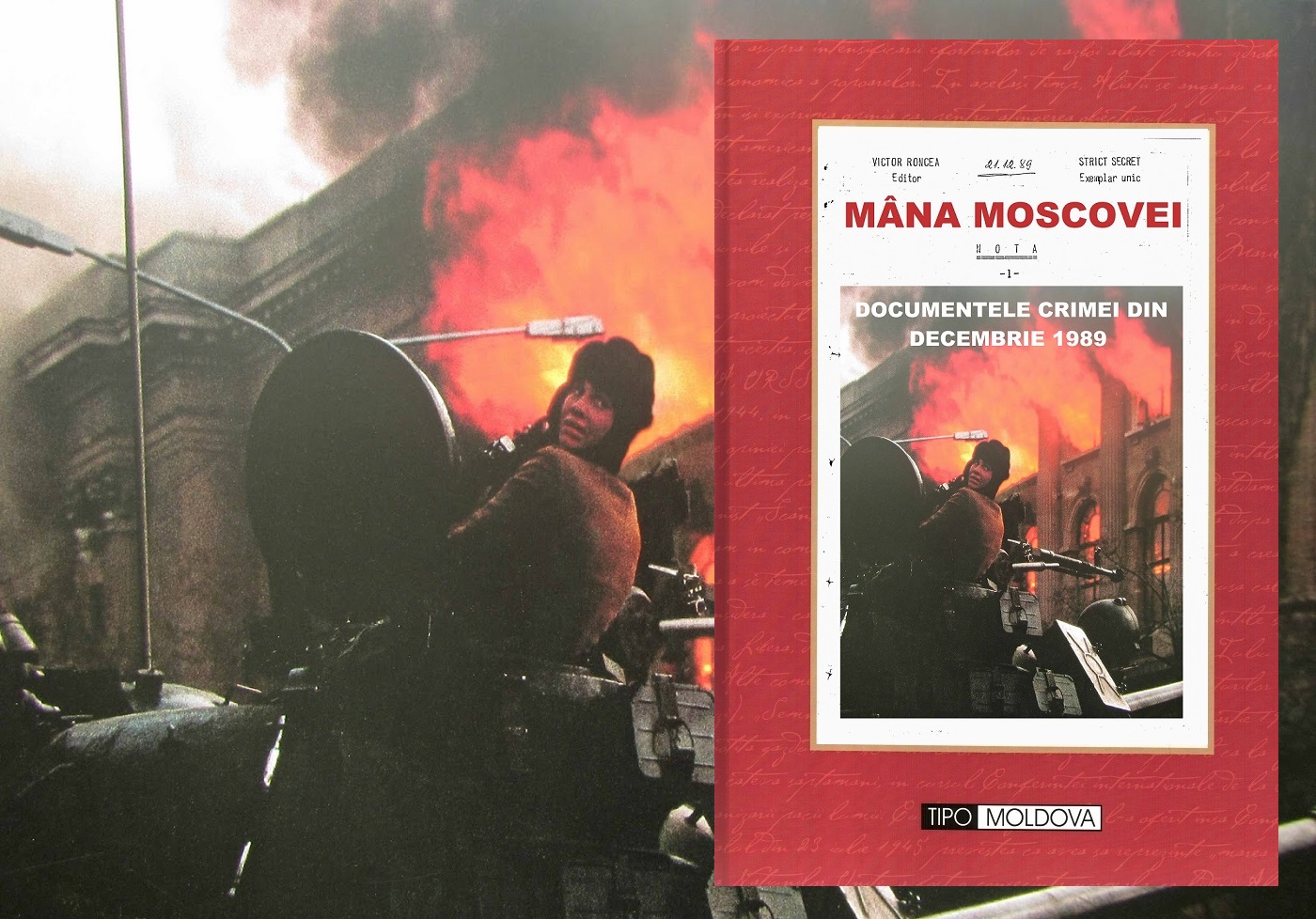


Pingback: Despre viziunea lui Larry Watts privind relaţiile dintre Blocul Sovietic şi România în Revista American Intelligence Journal a Asociaţiei Naţionale de Informaţii Militare a SUA (NMIA) | Victor Roncea Blog
Pingback: Despre viziunea lui Larry Watts privind relaţiile dintre Blocul Sovietic şi România în Revista American Intelligence Journal a Asociaţiei Naţionale de Informaţii Militare a SUA (NMIA) | VA RUGAM SA NE SCUZATI, NU PRODUCEM CAT FURATI!
Pingback: Decembrie 1989 – “Turiştii” sovietici. O analiză istorică de Larry Watts | VA RUGAM SA NE SCUZATI, NU PRODUCEM CAT FURATI!
Pingback: Larry Watts: Turismul sovietic și sfârșitul lui Ceaușescu. Evaluarea "celor mai bune dovezi". STUDIU despre Revoluția Română din decembrie 1989 - Ziaristi OnlineZiaristi Online